|
Vernon
"Woody" Woodward
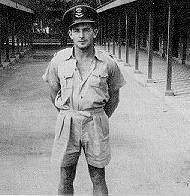
Vernon Crompton Woodward entered the
world on Dec. 22, 1916 as the first of three children. His father ran a
market garden on Vancouver Island. As a youngster he was interested in
hunting. He owned a .30-.30 rifle when he was 14 and could kill a deer on
the run with one shot. But, oddly enough, he wasn't much good with a
shotgun.
Early in 1938 he decided to enlist with
the Royal Air Force, as he was a "British subject". He didn't go for the
RCAF as they were taking only university graduates for pilot training.
This policy is similar to what is done today, for in peace time the
military staffs lower positions with the officers of the future if there
is a war. Then the lower ranks can be quickly filled with men that are not
so highly educated. In 1938, the RAF was expanding as rapidly as the
government would allow it, in response to European tensions. Germany was
coming out of the depression through a rearmament scheme, Hitler had
pulled off the Munich putsch, the Austrians had been forced to join
Germany in the "Austrian anshluss", the Spanish (with the assistance of
the Germans and Italians) were embroiled in a bitter civil war and the
Italians were trying to expand into Ethiopia.
Woodward's uncle in Gloucestershire had
given up a career as a doctor, in exchange for service in the RNAS in WWI.
He was full of stories about Zeppelin raids over
England, anti-submarine patrols from Scotland and fighting on the Western
Front. Woody had joined at the right time, the RAF had been granted
another expansion and he was taken in as an Acting Pilot Officer on Aug.
20, 1938. Of the 17 Canadians enrolled at this time 13 would die, most in
action flying bombers. Of the 123 enrolled in that RAF expansion, 80 would
die. Not very good odds.
Following medical exams they went to
Elementary Flying and Reserve Flying Schools. These were mostly operated
by local flying clubs and were operated by commercial companies for the
RAF. Woodward went to Perth, Scotland and took his initial training on the de Havilland Tiger Moth.
It was a quick and delightful aircraft to fly. One of the few fully
aerobatic biplanes made that could be used for pilot training. Compared
with WWI, the training Woodward received was very good. They did cockpit
drill, taxiing, takeoffs, circuits and bumps, aerobatics and the first
solo. Following the successful solo, and not all were, the training became
more difficult with longer more complex flights. On the ground they were
provided lectures on navigation, flight theory, emergency procedures and
other stuff of general use. He spent about 70 hours on Tiger Moths
(compare that to Billy
Bishop's 8 hours prior to being posted to a Home Defence squadron).
One of his instructors gave him some good advice
"You're too good at aerobatics
and formation flying to be on bombers. Be a fighter pilot - you'll
live longer."
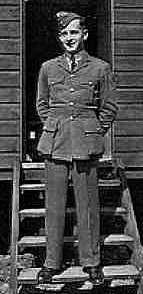
Following
initial training they were issued uniforms, Woody was posted to No 1 RAF
Depot at Uxbridge. Here they stressed physical fitness and drill. It
didn't last long, he was soon shipped to No. 6 Flying Training School at
Little Rissington, Gloucestershire. It was north of Oxford near Blenheim
Palace. No. 6 FTS did Intermediate Training and Advanced Training using Hawker Audaxes and Furies
for IT. This training was quite extensive, each instructor was given 5 or
6 pilot students to work with. Classroom instruction, phys-ed and drill
and aircraft work took up 12 hours a day. The Audax was tough, but not
inspiring. They worked on basic gunnery and bombing with it. Then training
in the single seat Hawker Fury followed. This aircraft was much more like
a "modern" fighter, capable of 200+ mph, with twin synchronised machine
guns. Following the Fury, bomber training was done on the twin-seat Hawker Hart, designed as a
light bomber. Each was more complex than the previous, and more capable.
He graduated with his wings in Dec. 1938 and went on to Advanced Training
at Warmwell, Dorset. Nearby was a long, skinny island of shingle and sand
they used for live firing of machine guns, and dummy bombing targets at
sea. This wasn't without danger, one of his buddies augured into the
island in an Audax when he failed to pull out of a dive.
North Africa
By June 1, 1939 Woody was posted overseas to join No. 33 Squadron, in
Ismaila, Egypt. Pre-war life in Egypt was a peach. They enjoyed the perks
that were available to English officers at the end of the English empire.
A personal servant to wake him, clean up after him, and lay out his
clothes. He could visit Cairo, the pyramids, swim at the French Club or
idle away the time in the bar at Shepheard's Hotel.
By Sept. 3, 1939 England and France
declared war on Germany and her unwilling ally, Austria. Italy, the main
country of concern in the Mediterranean area remained neutral, however, no
one was in any doubt which way Mussolini, the fascist dictator, would turn
if Italy entered the war. In an unsettling way the RAF made it's men face
the reality of war. They issued fire-proof identification tags and
requested they make out their wills. No. 33 Sqdn moved to forward posts
in the desert closer to Libya.
Life on these "bases" consisted of
training flights, heat, sand, flies and a dip in the Sea for recreation.
Part of their work was to prepare extra landing fields even further into
the desert and closer yet to Libya, as she was Italy's ally and any
attacks would likely come through there. Considerable time was also spent
on cooperation exercises with Allied ground forces to develop tactics. No.
33 Squadron was still flying the obsolete Gloster Gladiator, the last
biplane fighter the British operated. Times had rapidly overtaken the
Gladiator, but it would show a good accounting of itself over the next two
years in North Africa, Greece and Malta. Especially with Woody at the
stick. All RAF units in North Africa comprised Egypt Group and were under
the command of Air
Commodore Raymond Collishaw, the WWI Canadian fighter ace. He had been
given carte blanche to run the North African air campaign to fit into Gen.
Wavell's plans. Like Wavell and Maj.-Gen. Richard O'Connor in charge of
the Army, he planned on getting the war off to a running start, to take
the initiative and hit the Italians first as soon as they decided to join
the war. Up to May, 1940 the only damage done to No. 33 Sqdn was by the
sand and wind, as ferocious sand storms flipped and damaged aircraft, tore
down tents and made all activities come to a halt. All through May the
North African RAF squadrons were put on 24 hour alert, and then 4 hour
alert on the possibility of Italy joining the war.
On June 10, 1940 Italy declared war and
joined Germany. On June 11, the British 7th Division under Maj-Gen.
O'Connor started offensive action against Italian troops in western Egypt,
and Collishaw's Blenheim I
bombers started their war by bombing the Italians at El Adem airfield near
Tobruk. Italian ships at Tobruk and aircraft at El Adam were attacked the
next day with the loss of an aging cruiser. To complicate matters for the
Italians, their commander Governor-General Marshal Italo Balbo was shot
down and killed by his own AA guns over Tobruk just as an RAF raid
materialized (could this have been coincidence? Or is it possible that
this was deliberate as Mussolini considered him to be his only serious
contender in the fascist "government".)
No. 33 Sqdn was flying patrols from June
11 onwards. On June 14, Woody downed his first aircraft. They were over
Fort Capuzzo, on the Libya-Egypt border, when his patrol spotted two Caproni Ca. 310
reconnaissance bombers. The bombers had been escorted by Fiat C.R.32 biplane
fighters, that looked much like Gladiators. They approached the Italians
at the same altitude and fired as they passed. Woody aimed for the motor
of the Ca.310 and saw it start to smoke. A fellow fighter pilot also fired
on the bomber. It crashed in front of a British armoured column. He and
Woody shared the kill. Woody also got a "probable" on a Fiat C.R.32.
Later in June they moved up to bases
closer to the action as the Italian bombers could easily outrun the
Gladiator fighters. They also received several more Blenheim I bombers and
a Hurricane fighter.
Collishaw made the most of his Hurricane, dubbed "Collie's Battleship",
moving it around and hitting Italian targets. This confused them
considerably. They thought a whole squadron of Hurricanes existed, and so
spread out their forces to combat them. This diluted the Italians
effectiveness in the air.
On June 20, again in the Fort Capuzzo
area Woodward's flight came upon three C.R.32 biplanes. He forced one
down, and went after a second, shooting it down behind enemy lines after a
long dogfight. Generally, the tactics employed by the Regia Aeronautica
were reported to be "crude and accuracy of fire not noteworthy", also
their aircraft were notoriously under armed. Along with defensive patrols
were escort missions for the Squadron's Westland Lysanders, who
were doing reconnaissance and ground strafing of motor convoys. On July
24, his flight ran into five
Fiat C.R.42 biplane fighters. He downed one and got a "probable" kill
on a second. They downed four of the five Italian fighters.
On the 25th, they got into a hard slugging match while escorting Blenheim
bombers. Woodward downed a CR.42 in flames and shared a second. Then his
wingman was shot down and Woody had to run from a group of C.R.42s.
Fortunately, the Gladiator was more agile than the C.R.42, he dove for the
deck and weaved violently at 100 feet. Trying to hit the Gladiator at a
dangerously low altitude was too much for the Italians, they broke off and
Woodward escaped. Woody was now an ace with 5 kills and two probables.
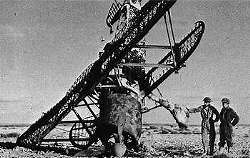
In Sept. 1940, the Italians under Gen. Grazziani, finally got organized and started a ponderous offensive from
Libya into western Egypt. The British pulled back to their main base,
Marsa Matruh, allowing the Italians to capture an airbase at Sidi Barrani.
The Italians stopped there until Dec. 1940 to regroup and restock
supplies. In this period Woody was in the rear, training on Hurricanes. It
was a major step up from the old Gladiators. His first operational sortie
in a Hurricane was on Oct. 11, 1940 from a base called Fuka. They ran
reconnaissance missions to learn what the Italians were up to, and
maintained standing patrols over the air field when Wellington and Bombay bombers were
present.
The Hurricanes were welcome, but
initially the pilots had problems closing on the slower, yet more agile
CR.42s. In one dogfight the British and Italians circled about each other
in C.R.42s and Hurricanes without much happening, until six Gladiators got
on the scene. They shot down eight of the Fiats.
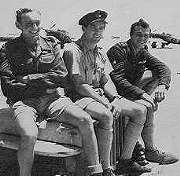
By
now Woody (centre in photo) was a Flying Officer and was in command of a
detachment at the small but important base Bir al Kenayis. They now had Blenheim IVs,
Hurricanes and Wellington bombers. Wavell and his generals undertook a 5
day "reconnaissance in force" to attack the Italian's Sidi Barrani line
with operation "Compass". Woody's squadron put out a maximum effort prior
to Compass by harassing the Italian communication lines and intercepting
all enemy reconnaissance aircraft. Then followed escort duties for the
bombing raids just prior to the attack. Detailed planning left nothing to
chance. British, Indian, Australian and New Zealand troops advanced at
night and attacked the front on Dec. 9, 1940. Woody's flight became
engaged in a large dogfight with CR.42s attempting to attack the advancing
Allies. He shot down two and damaged a third. The Italians threw
everything they had into the air, ground attack Breda Ba.65s, CR.42
fighters and SIAI-Marchetti
SM.79 bombers. For several days the front was hot, but then the entire
Italian front collapsed.
By Dec. 12 they had been forced out of Egypt,
with the Western Desert Force capturing over 38,000 enemy troops and a
large amount of armour, guns, vehicles and aircraft (Bf109s, Junkers Ju87 dive bombers
and He111 bombers on
loan from the Luftwaffe). Air operations were hectic, on Dec. 19 Woodward
surprised a formation of CR.42s and shot down two. December was a good
month for Woodward, he destroyed 5 aircraft, got a "probable" on another
and damaged two SM.79 bombers. Operation Compass quickly became a rout of
the Italians. By February, 1941 the Allies took Benghazi and controlled
the entire north eastern area of Libya called Cyrenaica. When the advance
began the RAF concentrated on keeping air superiority and strafing Italian
rear areas and lines of communication. They attacked numerous targets of
opportunity and did considerable damage behind the front lines.
Greece
On October 28, 1940 Il Duce, in a fit of envy and rivalry with Hitler,
ordered Italian divisions into Greece in an attempt to control the entire
eastern Mediterranean. Britain had earlier renewed a pledge of support for
Greece to keep the Axis out of the strategically important country. When
Italy marched across the Albanian border into Greece, Britain moved
aircraft into the country to help Greek troops stall the Italian advance.
The Greek troops fought amazingly well, considering they were facing a
large number of Italian troops and were poorly equipped. They fought so
well that by Jan. 1941, Italy required German reinforcements, and Greece
needed British (mostly ANZAC) troops. Woody's No. 33 Sqdn went to
reinforce the squadrons already there to replace the Greek Air Force, that
had ceased to exist. Woodward remained in Eleusis, while a detachment was
sent to Paramythia, about 50 miles from the Greek lines. Considerable
action ensued along the Albanian/Greek border with each side jockeying for
advantage. On Feb. 28th, the Italians decided to stamp out the British
near the border and ordered a maximum effort to intercept a large British
offensive patrol. 50 Italian planes met 29 British in a huge dogfight over
the Greek/Italian lines. The Italians were the big losers, with 27 planes
lost without a single British plane shot down.
By
March 12 Woodward had moved forward to Larissa, the only pre-war,
permanent Greek airbase. About this time No. 33 Sqdn received a new
commanding officer the South African, "Pat" Pattle. No. 33 Sqdn was
notable for it's lack of military demeanour, they didn't go through
channels for anything, they ignored authority and didn't take a
professional approach to flying. Quite the opposite to Pattle. He pulled
them up by their socks, starting with formation flying and dog fighting
skills. He realized that the Germans were a lot tougher to beat than the
Italians, and that the coming fight in Greece would tax all of their
skills.
On March 23 they were detailed to bomb
and strafe an airfield near Fier. Ten Hurricanes approached the airbase
when they were jumped by roughly 20 Fiat G.50 fighters. Two
Italian planes were downed, one by Woody. This dogfight interrupted their
strafing, except for Pattle, who destroyed two aircraft on the ground. On
April 6, Woodward single handed destroyed three Cant Z.1007 bombers.
Five of them had raided Volos, two Hurricanes from 33 Sqdn were scrambled
and shot one bomber down over the target. Woodward was sitting on the
ground with his airplane being armed when the call came. He rushed the
armourer to finish loading and leapt into the air to intercept the other
bombers on their way home over the Gulf of Corinth. He approached the four
bombers from behind and was subjected to considerable fire from the rear
gunners. He followed the recommended procedure for Z1007s, that was to get
to close range, fire at the wing roots where the main fuel tanks were,
followed by a downward flip and upward zoom to ignite the fuel/oil/air
mixture. Two bombers went down in flames, and a third was seen to slowly
descend and land on Greek soil with badly smoking engines. The fourth got
away as he ran out of ammunition because the armourer incorrectly
installed some of the belts in his guns. Only 4 of the 8 machine guns had
been firing.
This same day Germany entered the Greek
campaign. Overall, the RAF had some 80 serviceable aircraft in Greece,
while Germany and Italy fielded nearly 800. It was only a matter of time
before the RAF and the ANZACs were pushed out of Greece.
On April 13, Woody was on a lone
reconnaissance flight when three Bf109s jumped him. He shot down one in
flames and the other two ran off. He finished his mission before returning
to base. The day after they intercepted several flights (a flight of 3 was
a Kette) of Stukas with Bf109s as escort. Woody and his wingman tore into
them, although they had a hard time following the Stukas once they went
into a near-vertical dive. Regardless, Woodward downed two and his wingman
one. The 109s didn't interfere, as though it was of no matter to them. The
Germans started wide spread attacks on RAF airfields all across Greece to
neutralize them. In a 1984 interview, Woody recalled:
"There would be as many as 18 Messerschmitts at a
time - six strafing and 12 giving them cover. It was worst for the men
at readiness - waiting for a scramble order and then caught out in the
open, exposed to bombs and bullets. Luckily, I was always near a slit
trench when these attacks started - lots of stuff flying around, but
nothing close to me."
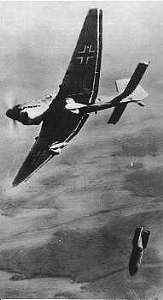
The RAF were forced to pull back to
Eleusis, although they were not safe from German strafing attacks. On the
19th he shared a victory over a Henshel Hs.126 with Pattle
and another pilot. Pattle was mad, he had gone down to attack the Hs.126
and the rest of the flight followed to join in the fun. No one thought to
provide top cover. On leaving the area they climbed up through a valley
and met 9 Bf109s coming at them. Each side fired quickly and then passed.
Pattle and Woody pulled into Immelman turns and got onto the German's
tails. Pattle downed two, Woodward shot down one when a pair of 109s went
after a smoking Hurricane.
The last great air battle in Greece
occurred over the harbour town of Piraeus, near Athens. The Germans made a
maximum effort raid, mostly to draw the RAF into the air so they could
destroy them. It pretty much worked the way they planned. Pattle died in
the battle. Woody shot down a
Bf110 in flames, damaged two more and damaged a Junkers Ju88. Following the
battle he flew to Egypt to pick up a replacement Hurricane and met his
squadron at Meleme airfield in Crete.
By May the Allies had been forced out of mainland Greece.
Crete
Crete was not garrisoned very strongly by the British because of Greek
neutrality. Not until 1940, when Italy entered the war and threatened
Greece could England start to garrison the island. This was unfortunate as
Crete controls the eastern Mediterranean, England's access to Middle
Eastern oil, and the Suez Canal. From Crete Allied aircraft could have
reached Rome, Belgrade and the Ploesti oilfields of Rumania. The largest
harbour in the Mediterranean is on the west end of the island at Suda Bay,
near Maleme airfield. In April, 1941 the island resources were swamped
with 25,000 Allied evacuees from mainland Greece. Altogether only 41,000
poorly equipped English, New Zealand and Greek troops were available. They
had little time to build a defensive arrangement, as the Germans realized
that Crete could be overwhelmed quickly if they continued their momentum
from their last days in Greece.
Crete was a poor place to have to defend
from the north. The coast was low and open with several good ports, the
interior was mountainous with poor roads and the south coast had only one
or two barely accessible ports. The Allies had only 28,614 men to guard
the entire north coast and the ports. Continuous air attacks destroyed
fighters on the ground, ammo and fuel dumps, killed men and made working
extremely difficult. The remaining four Hurricanes and three Gladiators
were flown to Egypt. The Germans started Operation Mercury on May 19 with
overwhelming air power to neutralize the ground forces and to create a
bridgehead. They had 22,750 men, 500 transport aircraft, 80 gliders, 280
bombers, 150 dive-bombers 180 fighters and 40 recon. aircraft allotted to
take Greece. The attack would concentrate initially on Maleme and Canea in
the west, and on Retimo and Heraklion in the centre. The task of taking
Maleme was given to General Meindl and his Assault Regiment. Glider-borne
troops were to land and take the area surrounding Maleme airfield to clear
the way for Junkers 52 transports carrying another 2,000 men. Paratroopers
were to land clear of the area, form up and support the glider troops.

Maleme airfield was guarded by AA posts
and sandbagged forts with machine guns, with the New Zealanders (including
Maoris) in hilltops half a mile from the air strip. On May 20 a heavy
bombing raid started as a prelude to glider landings. Most of the gliders
landing near the airfield were too close to the machine gun forts for many
of the German troops to survive. Most of the paratroopers (except for the
III Paratroop Battalion who lost 200 men on landing) landed out of range
of the New Zealanders and formed up. The other glider-borne troops were
more successful in capturing their objectives around Maleme.
More landings of Junkers Ju52s supported by
strafing Bf 109s, Bf110s and dive bombing Ju87s ensured that a permanent
force of Germans occupied parts of the airstrip. Lack of communications
between the New Zealand Battalions and heavy fighting around the HQ area
near the airfield, led to the partial withdrawal of the New Zealanders to
the nearby hills.
The next two days were a series of
attacks, counter attacks and patrols by both sides, with the Germans in a
solid position on the airstrip and the Allies in the hill forts. More
paratroopers landed amongst the fierce Maori troops and were wiped out
before they could get properly into action. Further landings of German
troops gave them the impetus to attack the New Zealanders again. Once the
airstrip was secure, the Germans brought in troops and artillery and
turned the tide of the battle. On the 24th, Woodward tried to lead a group
of RAF men out of the battle zone, but ran into a large group of Germans
and had to return to Maleme. The next night there were roughly 120 of
them, 20 RAF and 100 Royal Marines, ready to try to escape. Woodward and
the Marine officer took turns leading the column into the pitch black
night. By marching all night and crossing through the German lines three
times, they made their way east to Canea. On the night of May 26, they
boarded the Australian destroyer HMAS Nizam for the journey to
Egypt. Some of the other RAF personnel withdrew to Canea and then to the
south coast to Sfakia. On May 22, the Royal Navy had to withdraw from
around Crete as the Luftwaffe made operations too hazardous. A total of
16,500 troops were evacuated by RN cruisers and destroyers from the south
coast port of Sfakia. Most of the remaining 11,800 Allied troops on Crete
were captured and interned in POW camps for the rest of the war.
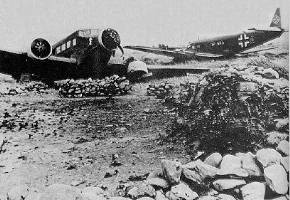
The
Germans had 6,116 casualties, with 1,990 killed (25% of the paratroopers
were killed) on Crete and suffered considerable losses of transport
aircraft as most of the JU52s that landed on Crete were destroyed in the
attempt. Hitler disallowed the use of paratroopers, in that role, for the
remainder of the war. A few Allied troops continued guerrilla operations
from the central mountains along with the fierce native Cretans. On May 9,
Woodward had been awarded the
Distinguished Flying Cross for "gallantry and devotion to duty in the
execution of air operations".
He was sent back to his old area of
operations in North Africa, posted to Amriya where No. 33 Sqdn had been
amalgamated with No. 30 until they could get more "Hurries". By the middle
of June he was again leading a detachment of Hurricanes near the town of
Sidi Omar on a strafing mission when they came upon a flight of Ju87s
escorted by Bf109s and G50 fighters. They promptly forgot about strafing
trucks and headed for the Junkers. In the ensuing dogfight Woodie shot
down a G50 and damaged another, two other Axis aircraft were destroyed and
several damaged. One of his long time pals from training days was killed
though, making it a memorable fight, for the wrong reason. This period was
quite intense as the Germans under General Erwin Rommel had skilfully
countered the British offensive named "Battleaxe". The Germans were now
quickly building up their forces in North Africa to push the British out.
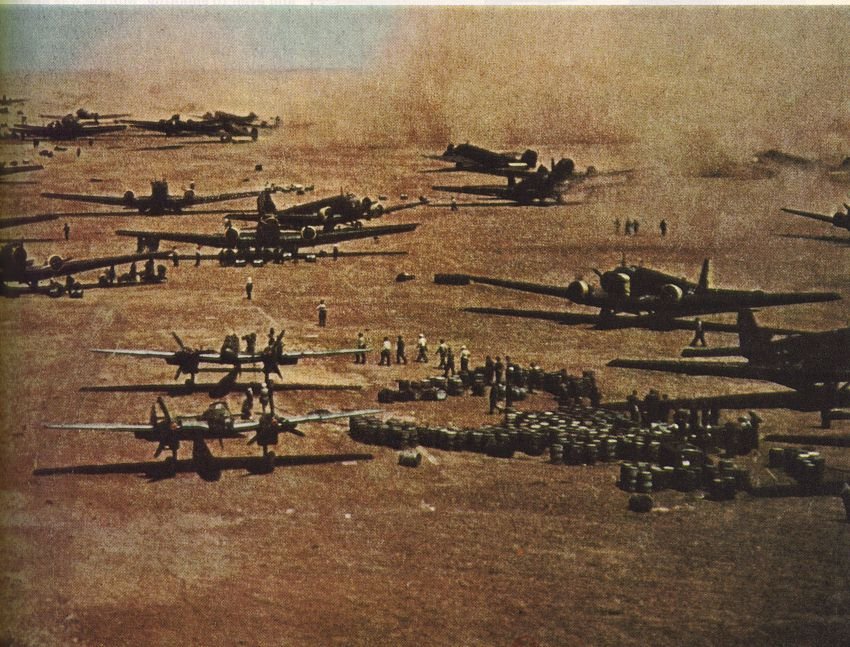
In between sorties they practiced new
forms of aerial interceptions using radar detection and radio direction
from the radar operators. On July 12, 1941, Woodie scored his last victory
over an enemy aircraft using the new technique. He and another pilot were
scrambled and vectored onto a reconnaissance Ju88 by the radar operators
on board HMS Formidable. They made an initial pass and the Ju88
rolled onto it's back and dived for the deck. Flattening out at 500 feet
it tried to run for it, but the two Hurricanes were on it's tail. Woodward
fired a burst into the aircraft and it caught fire and crashed into the
desert. This brought his total to approximately 20. The actual total will
never be known due to lost records and fuzzy memories.
In September 1941 he was posted to
Southern Rhodesia to take up a new life as a fighter instructor at the
Rhodesian Air Training Group. Unlike the Germans, the Allies considered
their highly successful fighter pilots to be more valuable training new
pilots how to be good fighter pilots, than fighting the enemy. Many
Germans racked up massive kill records because they flew and fought until
they were seriously wounded, shot down over enemy territory or killed.
They weren't posted out to do pilot training.
From October to June 1942 he flew North American Harvard
trainers near Salisbury (Harare). This duty could be just as hazardous as
active fighter duty. One day he lost part of his tailplane to another
student plane while trying to teach formation flying. From active training
he was posted to the HQ for a while, also at Salisbury. Then in late 1942
he was posted back to North Africa to command No. 213 Sqdn RAF at Martuba
near Alexandria, Egypt. They were still flying Hurricanes, but the rest of
the theatre had changed considerably. The Germans and Italians under
Rommel had been beaten and were pushed out of Egypt and most of Libya.
Allied landings in Morocco and Algeria had cut off the Afrika Corps in
Tunisia, with no way out. The squadron was doing primarily escort duty for
transports and bombers. In January, 1943 they were posted to the
Libyan-Tunisian border to be closer to the action in case they were
needed. They saw little action. A few scrambles kept Woodie's hand in the
fighter game, but rarely did they see anything worth shooting at. In early
August he was again decorated with a Bar to his DFC for his activities in
Greece and Egypt, 22 months earlier. Later in August, 1943 he was posted
away to HQ, Air Defence Eastern Mediterranean, and then to the RAF Staff
College at Haifa to take the officer's advanced training course. Upon
graduation he took over command of the Middle East Communications Squadron
flying a variety of transports (Lockheed
Lodestars, converted
Bostons, Dakotas, Wellingtons, etc.) for
VIPs. They ferried generals, politicians and Arab princes around the
Middle East. One has to wonder if this was a reward for a job well done,
or a posting to fighter pilot purgatory.
After the War
Woodward decided to make the RAF a career following his war work. He was
posted to the Central Fighter Establishment for a staff position in 1946.
Two years later he took over command of No. 19 Sqdn flying de Havilland Hornets.
This position occupied him for only two years and then he was on to
Fighter Command HQ. Here he spent three years developing underground
control facilities for aircraft and communications all across England. The
cold war was now underway, and the potential for nuclear war was becoming
more apparent. Then it was back to the desk at the RAF Flying College,
Manby. Following the desk tour he took command of No. 122 Wing who were
flying the new Hawker Hunter
jets from Jever, Germany. He got into a squabble with his commander and,
for his pains, received a new posting to No. 39 Sqdn at Luqa, Malta flying English Electric Canberras
doing aerial photographic reconnaissance of eastern block countries around
the Adriatic. Also they were tasked with potential duties over southern
Russia.
In the event of war we were also
to go in after a first atomic strike to photograph whatever was left
so that the allies would know what to hit in a second strike.
Following his tour with No. 39 Sqdn, he
did more staff postings in England until he retired in 1963. He moved to
Australia and set up an air charter company. In 1967 he moved back to
British Columbia and lived in a modest retirement style working as a
member of the Corps of Commissionaires. As of 1987, he was still living
there.
|
